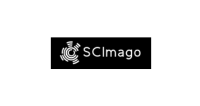Functional anatomy of the sternoglossus muscle of the tamandua tetradactyla (linnaeus, 1758)
DOI:
https://doi.org/10.5380/avs.v21i3.45598Palavras-chave:
Lesser anteater, Tongue, XenarthricResumo
The lesser anteater (Tamandua tetradactyla) (Linnaeus, 1758) presents a feed mechanism triggered thanks to the synergistic activity of the extrinsic muscles related to it, with the example sternoglossus muscle. This paper proposes characterizing this muscle, considering the origins and insertions, and discussing the results compared to similar species studied. Five anteaters donated by ICMBio were used. The samples were subjected to dissection procedures for access to the thoracic cavity and visualization of the muscle. The sternoglossus muscle of the lesser anteater originates on the side of the xiphoid process and continues with two bundles of muscles in the cranial direction that join near the base of the tongue, as part of its constitution. During the course of the muscle there is no connection to the hyoid bone and adjacent structures, connecting the cranium to the tongue, which justifies the nomenclature sternoglossus rather than sternohyoglossus. Thus, the combined muscle characteristics demonstrate a specific aspect within the analyzed species and highlight the main function performed by the muscles to move the tongue out of the oral cavity. Therefore, the absence of this muscle makes impossible the animal feed, since its directly related to the seizure of food through tongue.
Downloads
Publicado
Como Citar
Edição
Seção
Licença
Autores que publicam nesta revista concordam com os seguintes termos:
- Autores mantém os direitos autorais e concedem à revista o direito de primeira publicação, com o trabalho simultaneamente licenciado sob a Creative Commons - Atribuição 4.0 Internacional que permite o compartilhamento do trabalho com reconhecimento da autoria e publicação inicial nesta revista.
- Autores têm autorização para assumir contratos adicionais separadamente, para distribuição não-exclusiva da versão do trabalho publicada nesta revista (ex.: publicar em repositório institucional ou como capítulo de livro), com reconhecimento de autoria e publicação inicial nesta revista.
- Autores têm permissão e são estimulados a publicar e distribuir seu trabalho online (ex.: em repositórios institucionais ou na sua página pessoal) a qualquer ponto antes ou durante o processo editorial, já que isso pode gerar alterações produtivas, bem como aumentar o impacto e a citação do trabalho publicado.













